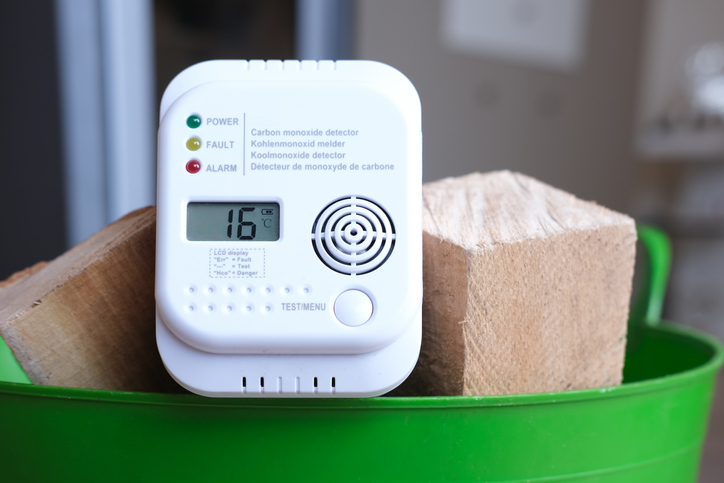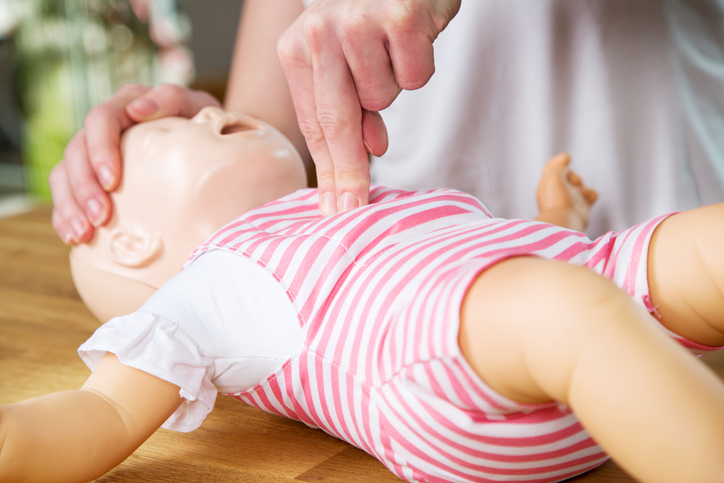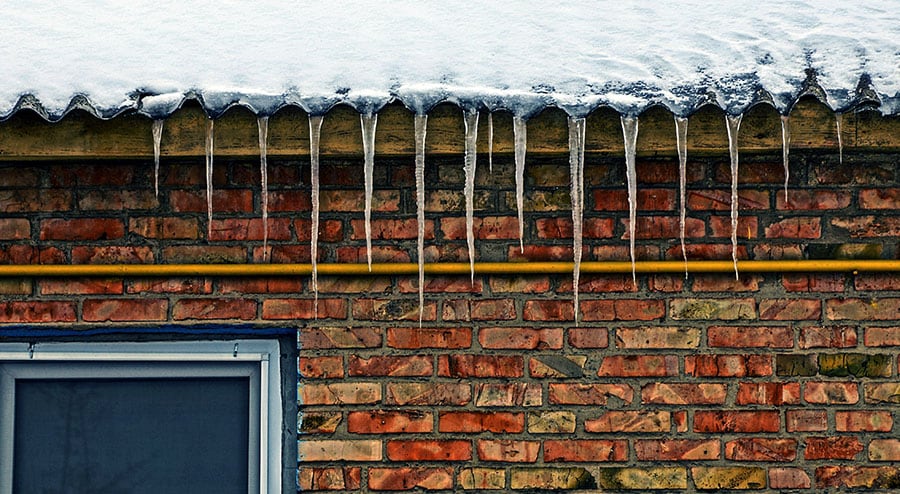Recent events at Palisades Ski Resort in Lake Tahoe raised questions of avalanche safety following a deadly outcome. When it comes to ensuring safety on the mountain, it is up to the skier as well as the mountain experts to be aware of the threats posed by avalanches.
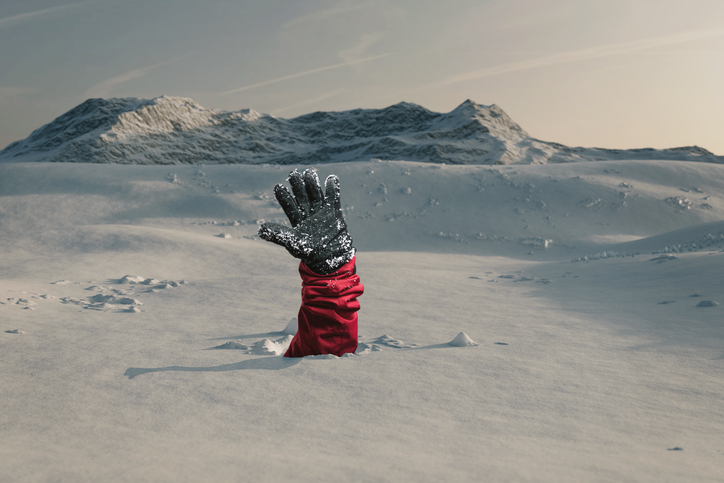
In all likelihood, what is the real chance that you’ll ever experience an avalanche? Well, in 90% of avalanche incidents in which individuals are hurt or killed, it was either the victim or someone with the victim that triggered the avalanche. This is an alarming statistic, suggesting the need for heightened avalanche safety training on a global scale. However, while humans may be the leading trigger of avalanches, it still takes the right set of conditions and certain ingredients in order for one to occur.
All this begs the question, if you ever did find yourself being chased by a river of snow, would you know what to do? Most people, including myself, would say no, and that is what this article aims to change. First and foremost, protecting yourself from an avalanche before one occurs is the primary step. This involves being able to read avalanche forecasts, recognizing avalanche terrain, having protective equipment, and more. But, if it ever came time to face an avalanche head on, knowing how to prepare for the impact and escape could save your life, or the life of a friend.
You first need an understanding of what an avalanche is in order to escape effectively. Surviving an avalanche requires knowing what one is made of, what factors increase the likelihood of one occurring, and how to identify the warning signs before one begins. In many ways, you have the power in managing your safety on the mountain. It takes a level of preparedness that extends beyond normal skiing habits. By having the right tools, knowledge and experience, you can learn how to escape an avalanche with a story to tell. While avalanche safety is a community wide effort, keep in mind that it is influenced by the choices of individuals on the mountain.
What is an Avalanche?
An avalanche is a rapid flow of snow down a hill or mountainside. Avalanches can occur naturally or be triggered by environmental factors or human activities. There are several types of avalanches, and it takes the right mixture of events for one to occur. These occurrences are massive and frightening to be involved in. So, to maximize your safety on the mountain this season, it is important to first understand why they occur, when they are most prevalent, and where they are most likely to happen.
Factors Causing an Avalanche
Avalanches can happen from sudden changes. This can be in terms of weather, snowpack shifts, or accidental triggers. But again, it takes certain elements for one to occur. Let’s look at the ingredients for an avalanche and the main causes of these powerful events.
Slope
For an avalanche to occur and for snow to slide down a mountain, the slope of the mountain face has to be steep enough for the snow to gain momentum. However, if the slope is too steep, the snow typically can’t condense and stick together enough to create a threat. The ideal slope for an avalanche is 35-45 degrees. However, they can still occur anywhere from 25-60 degrees depending on other factors or conditions.
Snowpack Composition
The presence of storms, alterations in temperature, and wind patterns can create layers of a snowpack that vary between stable and unstable. These layers can differ in density, temperature, texture, and hardness. The development of a weak layer of snow is of the most notable concern for avalanches. These layers form weak bonds within itself and between the other layers making them subject to breakage. These layers can result from a variety of conditions. For instance, following a storm and snowfall, subsequent increases and decreases in temperature can cause the snow to melt and refreeze, changing the composition and stability of the snow and making it a granular or icy layer and hence sheer. New slabs of fresh and heavier snow can then make the following layers, and the process can continue. If layers are overloaded, the weak layers can break underneath, leading to an avalanche. Moreover, top layers can form slabs which are subject to collapse and can break away from the underlying snow. Hence, learning about the different compositions of layers with a snowpack is essential for understanding how they occur.
Precipitation, Temperature, and Wind
In considering some natural triggers that lead to avalanches, the amount of precipitation, temperature fluctuations, and strong wind presence are key factors. First regarding precipitation, as expected, an increase in snowfall can increase the likelihood of an avalanche. Heavy snowfall and the presence of rain can alter the density of layers within the snowpack and should be evaluated before heading out on the mountain, as avalanches typically occur more often after storms.
Moreover, the outdoor temperature before, during and after a storm can influence snowpack compositions and avalanche risk. For instance, before a storm, low and dry temperatures can weaken a snowpack. During a storm, cold weather can create a low-density snowfall, whereas warmer weather can create a higher density, or more compact, snowfall. After a storm, temperature and humidity can cause melting and subsequent ice formation with cold weather conditions. This influences how snow layers are created and impacts the strength of a snowpack.
Lastly, wind speed and direction are important factors in avalanche awareness. Blowing snow from high winds can create wind slaps, which is when a dense layer of snow forms over a weaker slab, creating overhang and poses an avalanche risk.
Common Triggers
There are various natural and human related factors that can trigger an avalanche. Often, many of them in combination can lead to one as well.
- New Snowfall
- Wind transported snow
- Heavy Rain
- Temperature Changes
- Cornice Falls (overhangs of snow)
- Skiing, snowboarding, or snowshoeing
- Snow Vehicles
- Controlled Bombing with Explosives
Frequency, Locations, and Seasonality of Avalanches
Avalanches can occur regularly in mountainous regions, especially those with suitable slopes and sufficient snowpack. Most often, they occur in mountain ranges with the right conditions for snow accumulation and slope instability. For instance, this could be in areas known for heavy snowfall and steep terrain, such as parts of the Rocky Mountains, the Alps, or the Himalayas. Avalanches in these regions can occur several times per winter season which might make them less than ideal locations for a winter vacation.
While the frequency of avalanches is influenced by a variety of factors, there is an obvious seasonal aspect occuring in the winter and spring. Winter is responsible for the accumulation of snow, and spring for the potential of the snow to melt and lead to wet avalanches. However, the exact timing and duration of the avalanche season varies depending on the geographical location and climate patterns of the area. In some high-altitude or polar regions for example, avalanches can occur year-round due to constant cold temperatures and snow presence.
Types of Avalanches
Now that we have an understanding of the factors that lead to an avalanche, there are four main types to look out for on the mountain. Being able to identify the type you see, or have to escape from, can help you tailor your survival strategies accordingly.
- Slab Avalanche: These avalanches are characterized by a clear and observable fracture line. It occurs when a cohesive layer of snow or ice breaks away from the snowpack. Note that this type is the most common AND the most dangerous as it can accelerate quickly.
- Loose Snow Avalanche: These avalanches begin at one point and fan out from there. As they expand down the slope, they pick up more snow and grow in size. These are not as dangerous as slab avalanches and typically occur naturally.
- Wet Snow Avalanche: These avalanches tend to occur in warmer conditions or following rainfall when the snowpack is more condensed with water, making it heavier and causing a snowslide.
- Powder Snow Avalanche: These avalanches typically occur following a slab avalanche, and consist of a mixture of powdered snow and air following the more condensed slab snow at the bottom. They create great clouds and can travel at fast speeds.
Looking up what kind of avalanches are most common in your region can be helpful, but also being aware of seasonal changes, and the presence or absence of storms before going on the mountain is intuitive in decreasing your risk of being caught in an avalanche this season.
Tips for Protecting Yourself Against an Avalanche Before They Occur
To protect yourself from the threat of an avalanche, and the ones you are skiing with, there are steps you can take to maximize your safety before and during the event of an avalanche. Having the right gear with you can mean the difference between life and death if caught in an avalanche. Moreover, you can eliminate this risk altogether by simply monitoring the weather before you go up on the ski lift. However, while you can be proactive and prepared for a ski day, it may come down to being able to properly identify the warning signs that can happen right under your feet
Gear and Tools
One of the most effective ways to survive an avalanche and protect yourself beforehand is to have the right tools. By having these following tools handy, you increase your chances of escaping an avalanche with minimal harm:
- Transceiver: A transceiver is a small electronic device that emits signals to allow you to be found if covered by snow. It is necessary for at least one other person or ideally everyone in your group to be wearing a transceiver so that they may receive your signal and locate you in the event of an avalanche, and vice versa.
- Probe: A snow probe is a tiny pole that allows you to locate the precise location of a person buried by snow, including their depth, after having received their signal from their transceiver.
- Shovel: A travel or portable shovel is ideal to maximize the time efficiency of digging another person out of snow.
Beyond all this, the most powerful tool you can possess is knowledge! Don’t put yourself in the situation where you may need to use these tools, which should always be carried and hopefully only used as a last resort.
Preparation Beforehand
In preparing for a ski day or backcountry mountaineering, you should always check the avalanche forecast first and foremost. The U.S. Avalanche Center provides regional forecasts for a number of locations around America, which should be checked daily if planning to ski or snowboard as weather patterns can often be somewhat unpredictable and change frequently. The forecast will tell you if the danger rating that day is low, moderate, considerable, high or extreme, the likelihood of an avalanche occurring, the size and expected distribution of avalanches, as well as advice on travel.
If the avalanche forecast is clear and you have the go ahead, then the next step is to pack up your gear. Again, bringing these tools with you can provide significant life saving support in the occurrence of an avalanche.
Lastly, one of the most proactive ways to establish avalanche safety is to take a training course. A basic avalanche safety course can provide you with valuable knowledge underlying avalanches whereas more advanced courses can offer formal training in avalanche field work. Overall, reading up on the area, being properly equipped, and being smart are the most important aspects of safety before heading up on the mountain.
Recognizing Avalanche Terrain and Mountain Safety
When on the mountain, despite all of your preparation, it is important to be able to identify the warning signs that an avalanche may occur while on the slopes. Overall, there are four main factors to look out for:
- Previous Avalanches: If you see visual evidence of a former or recent avalanche, such as large clumps of snow beneath you or a stark fracture line above you on the mountain, you should get off the slope and avoid the terrain altogether.
- Snow Cracks: Visual cracks on the snow surface or beneath your feet can indicate unstable snowpack.
- “Whumping” Noises: If you hear a prominent “whumpf” under or near you, this is the air being released from an unstable snowpack that has collapsed.
- Prominent Weather Changes: Recent or heavy snowfall, rain, strong winds, and fluctuating temperatures can create more likely circumstances for an avalanche and should be closely monitored.
Among these signs, it is also important to be aware of if the ground feels hollow as well as be aware of the risk for persistent slab avalanches which can occur in extended time frames following a storm. Moreover, assessing the slope of the mountain or ski run, identifying connected runs on the mountain, and acknowledging terrain traps, such as gullies, trees, or crevices, is essential in being proactive in avalanche safety.
How to Escape an Avalanche
You have taken all of the necessary precautions from buying the right gear, to reading the avalanche forecast, and watching for warning signs, but yet you are caught in an avalanche. Avalanches can be unexpected, so while we emphasize safety beforehand, we also want to equip you with information on how to escape and survive. There are certain tips and tricks we have identified to take, in sequential order, to protect yourself from the heavy snowpack.
Evasive Maneuvers
If you see an avalanche tumbling towards you, get out of the way! The first thing you can do is try to get to the side of the avalanche so that it can pass you without getting caught. Avalanches gain speed as they continue down the slope, so it is important to evaluate your positioning on the mountain in this situation. However, if you are unable to get out of the way, try and grab on to something stable and sturdy, such as a tree, and hold your position as it passes. Depending on the type of avalanche as well as the type of terrain, be sure to assess if the avalanche will fan out, as with a loose snow avalanche, or follow a more linear slope as with a slab avalanche, in order to pick the right direction and distance to move to get out of harm’s way.
Swimming and Body Position
If caught by the snow, you want to create a swimming motion with your arms and legs to move yourself towards the surface of the avalanche to stay on top.You body is more dense and can, or will, sink. Key advice suggests swimming uphill such that you are on your back with your face and belly positioned up to take less of the force of impact.
Mouth Pocket
If caught underneath the snow, you first want to stick your hand up into the air or towards the surface. This can help rescuers locate you and help you orient yourself. Then, with your free hand, dig and create a pocket of air around your mouth in order to maximize your access to oxygen. Moreover, try and take a deep breath before the snow stops to create more air around your chest when fixed in the snow.
Spitting
Spitting can help you figure out your positioning in the snow. If you spit and the saliva falls on the snow, you are faced down. If your spit comes back at your face, you are faced up towards the surface.
Stay Calm and Conserve Air
The most important thing to try and do is stay calm and not panic while you wait for rescue. Rapid breath can deplete your existing oxygen. Shouting for help may also not be advisable, as you are wasting energy and want to try to remain still.
What Happens to the Snow Around you in an Avalanche?
If caught underneath the moving snow, it is important to understand what happens to the snow around you. Once the snow stops moving, it refreeze and solidifies like concrete. The weight and stiffness of the snow around you will make it seemingly impossible to move, suggesting why following the tips we outlined is essential in maximizing your position in the snow for rescue.
Again, having the right tools including a transceiver, probe, and shovel, are invaluable in this situation as being able to be located quickly can save your life. It has been determined that 93 percent of avalanche victims are rescued alive if dug out within the first 15 minutes. However, after 45 minutes, these survival numbers decrease significantly to only 20-30% with nearly no survivors after two hours. When under the snow, the carbon dioxide from your breath can build up in the already minute air pocket, leading to CO2 poisoning and in many cases death. However, other causes of death can be hypothermia, or even trauma from hitting a mass in the snow on the way down. The danger of avalanches cannot be understated, and accounts from survivors give us insights into these harrowing and frightening events.
Recent Events: Palisades Tahoe
On January 10th 2024 at Palisade Tahoe Resort in California, avalanches led to a broken leg, 2 skiers needing rescue, and the death of one man. Two separate avalanches were said to occur 10 minutes apart in relatively the same area of the mountain on the 10th. To make matters worse, the following day on the 11th, another avalanche occurred, thankfully with no one being harmed. What is unusual about the occurrence of these avalanches was that there was only a light snowfall the night before with maybe a few inches. So it wasn’t unexpected for the snow patrol team to skip avalanche bombing that day.
The team reported to have bombed in the days preceding January 10th, but as Tom Day, a well known filmmaker with Warren Miller Entertainment, detailed after being on the slope Jan.10th, “Avalanche safety and snow science is not an exact science…It changes storm by storm, by temperature, moment by moment. So much goes into it.” Day concluded.
The events that precipitated at Palisades Tahoe could not be a more exemplary incident that highlights the need for avalanche safety. An avalanche can occur at any time on any mountain. Whether or not you are prepared is up to you.
Take Jason Parker, who recalls being poked in the pack with a snow probe after being engulfed in four feet of snow. Moments before being rescued, Parker detailed, “I really did just slow my breathing, and then I started telling myself: ‘I think this is it.’”
Moreover, reports from local news sources indicated that nearly 100 officials went to help the search and rescue team once learning of the avalanche. The scope of help and proactive response from the Palisades safety team and extended community highlight the massive significance of these events and ultimately the speed that is required to save those impacted.
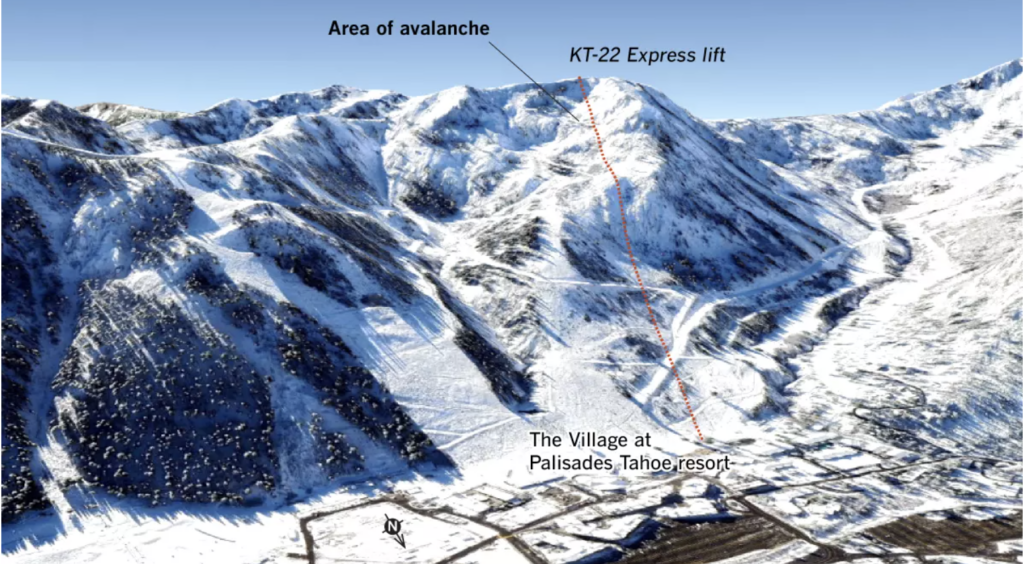
Research indicates that nearly 27 people die per year from avalanches in the United States. Specifically in 2023 in the U.S., 30 people are estimated to have died as a result. Globally, they are estimated to kill over 150 people per year. The need for avalanche awareness is crucial, for not only preventing associated deaths but for keeping the sport of skiing a safe and enjoyable seasonal event for everyone.
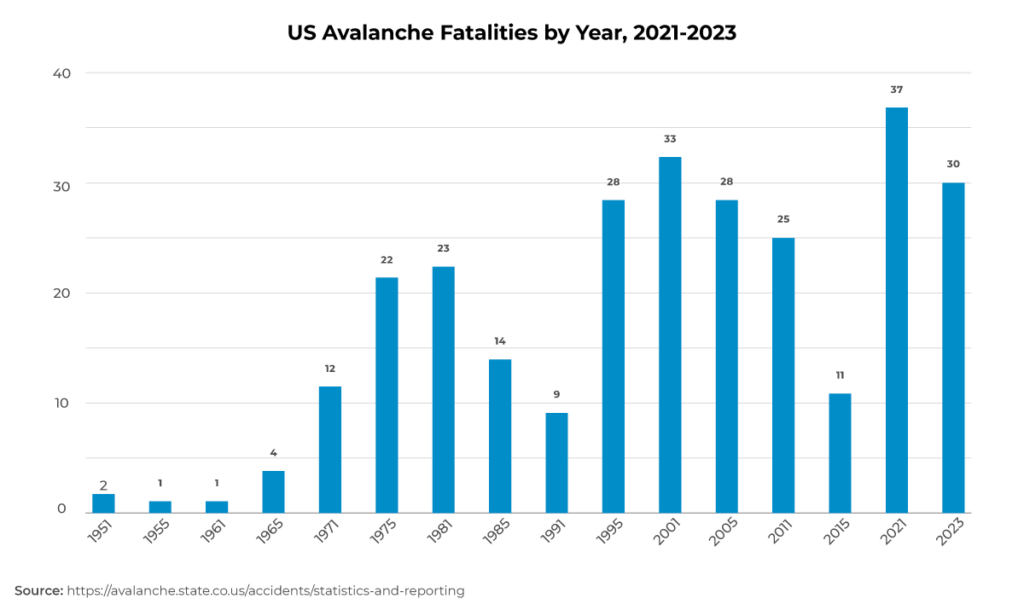
Specifics for Backcountry Skiers
Backcountry skiers require an additional level of awareness and should take extra precautions when it comes to avalanche safety. Backcountry skiers are some of the most likely individuals to be caught in an avalanche due to various factors. First off, the inherent nature of the mountain terrain poses significant risks. Resorts often manage the risk of avalanches via bombing and other controlled practices which are not present in the wild terrain. Secondly, help is not close. If you get caught, there is no established search and rescue team to find you immediately. Lastly, changing weather patterns may not be captured by certain avalanche forecasts if even fully reported, making the variable and rough conditions that much more of a concern.
It is that much more important for individuals participating in this activity to be well equipped and informed about how to use their gear, and how to react in the event of an avalanche. Specific classes for this terrain should be considered.
Minimizing the Risk of Avalanches: Understanding When to Visit a Mountain
Understanding the precautions that individuals and organizations take to minimize the threat of avalanches is important in evaluating the safety of your ski day. Moreover, in combining what we have learned, understanding what not to do is just as important as what you should do.
Avalanche Bombing
Many resorts implement avalanche bombing as a means of mitigating their risk on the mountain. This typically involves triggering small scale avalanches to decrease the presence of unstable snowpacks. This can be achieved for instance with the use of explosive charges placed by hand or aircraft for unreachable locations, or gas bombs via pipe systems. These events are typically initiated following heavy snowfall or following events that increase the likelihood of an avalanche. The goal is to maximize the safety and sport of populated mountain regions and keep more dangerous avalanches at bay.
When Not to Go on the Mountain
After all of this, when should you not go on the mountain? According to avalanche forecasts, there are 5 zones on their danger scale that indicate suitable conditions. High and extreme ratings on the danger scale are obvious cues to not ski that day. Moreover, if you observe heavy storms in your area, fluctuating weather conditions, or other factors that increase the chances of an avalanche, it’s best to stay off the mountain. Moreover, you must consider the possibility that you may trigger an avalanche following unfavorable conditions. Don’t put others at risk, and wait for the next pow day to catch the first lift.
Conclusion
A day on the mountain can be a fun event when the right precautions are taken. Understanding what causes an avalanche allows you to protect yourself beforehand, during, and after a snowslide. The most powerful tool we hope to have provided you with is knowledge. After all, you know what they say about assumptions… make the right choices this ski season and enjoy the snow.
Disclaimer
Content on this site is for reference and information purposes only. Do not rely solely on this content, as it is not a substitute for advice from a licensed healthcare professional. StaySafe.com assumes no liability for inaccuracies. Consult with your doctor before beginning any medications or programs.


